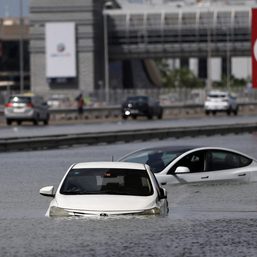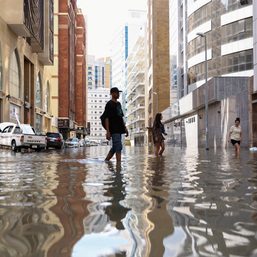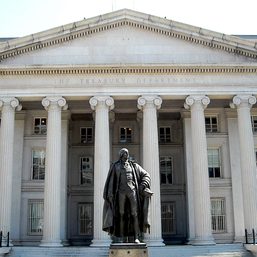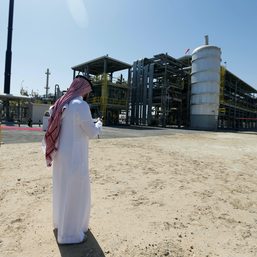SUMMARY
This is AI generated summarization, which may have errors. For context, always refer to the full article.

Groups of Omanis demanding jobs held fresh protests on Tuesday, May 25, activists said, in the biggest challenge yet to the Gulf state’s new ruler, who ordered the government to accelerate plans to create thousands of jobs.
Social media postings showed a group of protesters holding a sit-in under a bridge in the northern city of Sohar, where protests have taken place for three consecutive days. Other protests were reported in several other towns, including Rustaq, Nizwa, and Sur.
Videos and photos showed security forces serving water to protesters, a change of approach from the demonstrations on Monday, May 24, when police fired tear gas to disperse gatherings and arrested groups of protesters.
Sultan Haitham, who acceded to the throne last year after the death of Sultan Qaboos, has had to bring in austerity measures to ease pressure on public finances at a time of low oil prices.
The government did not comment on Tuesday’s protests. Oman’s state television showed the sultan chairing a meeting on youth employment.
“The youth are the nation’s wealth, its unfailing resource…. We will make sure we listen to them, sense their needs, interests, and aspirations,” Sultan Haitham said.
The sultan also announced new directives to create up to 32,000 full and part-time government jobs, according to Oman’s state news agency. These will include government subsidies for those entering the workforce for the first time.
The economy of Oman, a relatively small energy producer with high levels of debt, is vulnerable to swings in oil prices and external shocks such as the coronavirus pandemic.
The protests follow the introduction last month of a value-added tax for the first time, one of a series of reforms aimed at ensuring the sultanate’s financial sustainability.
Oman has pushed forward its program of replacing foreign workers with Omani citizens to ease pressure on the job market but youth unemployment is relatively high at over 10%.
“The authorities may choose to postpone the implementation of some of the planned fiscal measures to maintain socioeconomic stability, especially if oil prices rise enough to reduce pressure on the budget,” said Zahabia Gupta, an analyst at S&P Global Ratings.
The International Monetary Fund has estimated Oman’s gross external debt will go down to around 112% of gross domestic product this year from 127% of GDP last year.
Rachna Uppal, director of research at Azure Strategy, said Oman has committed to diversifying its income stream away from hydrocarbons but there are headwinds on the horizon.
“The slow pace of reforms and increased austerity measures combined with the ongoing uncertainty over the pandemic is testing popular patience…. If protests continue or spread wider, it could spook investors at a critical time for Oman,” she said.
Markets so far appeared to have shrugged off the protests, with Oman credit default swaps – a measure of sovereign default risk – unchanged on Tuesday, according to IHS Markit data.
“Seeing where oil prices are and Oman’s move early in the year to fund the deficit – it already raised $4.35 billion out of its $5-billion external funding need – there are no major concerns in the market,” said Zeina Rizk, a fixed income fund manager at Dubai-based Arqaam Capital. – Rappler.com
Add a comment
How does this make you feel?




There are no comments yet. Add your comment to start the conversation.